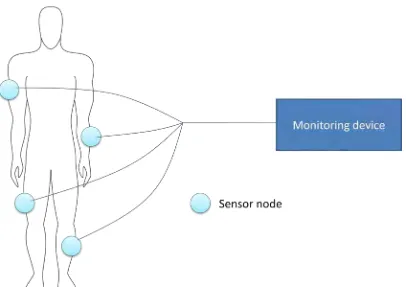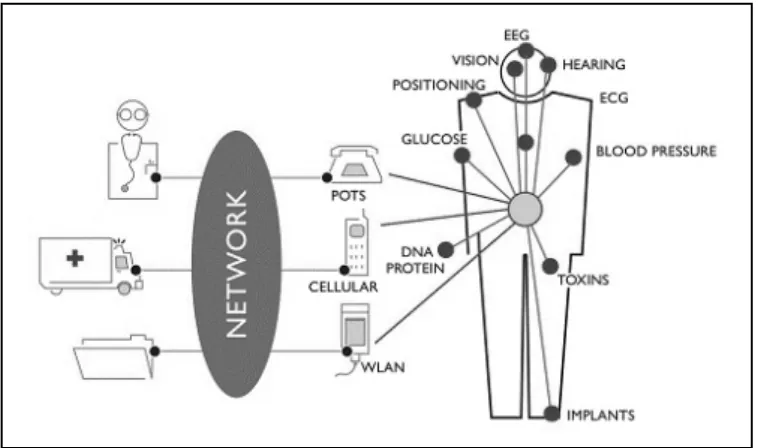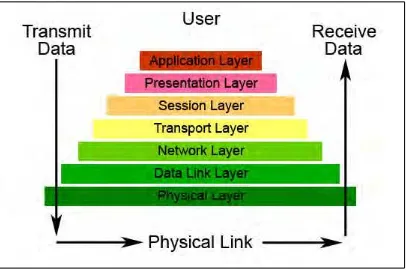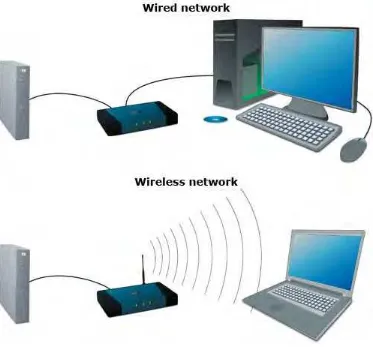DEVELOPMENT OF WIRELESS SURFACE ELECTROMYOGRAPHY FOR
TELE-REHABILITATION APPLICATION: BODY AREA NETWORK
IMRAN BIN NAZIRI
i
z
DEVELOPMENT OF WIRELESS SURFACE ELECTROMYOGRAPHY FOR TELE-REHABILITATION APPLICATION: BODY AREA NETWORK
IMRAN BIN NAZIRI
This Report Is Submitted in Partial Fulfilment of Requirements for the Bachelor Degree ofElectronic Engineering (Computer Engineering)
Fakulti Kejuruteraan Elektronik dan Kejuruteraan Komputer
Universiti Teknikal Malaysia Melaka
ii
UNIVERSTI TEKNIKAL MALAYSIA MELAKA
FAKULTI KEJURUTERAAN ELEKTRONIK DAN KEJURUTERAAN KOMPUTER
BORANG PENGESAHAN STATUS LAPORAN PROJEK SARJANA MUDA II
Tajuk Projek : Development of Wireless Surface Electromyography for Tele-Rehabilitation Application: Body Area Network
Sesi Pengajian : 2011/2012
Saya IMRAN BIN NAZIRI
mengaku membenarkan laporan Sarjana Muda ini disimpan di Perpustakaan dengan syarat-syarat kegunaan seperti berikut:
1. Laporan adalah hakmilik Universiti Teknikal Malaysia Melaka. 2. Perpustakaan dibenarkan membuat salinan untuk tujuan pengajian sahaja.
3. Perpustakaan dibenarkan membuat salinan laporan ini sebagai bahan pertukaran antara institusi pengajian tinggi. 4. Sila tandakan ( √ ) :
SULIT* (Mengandungi maklumat yang berdarjah keselamatan atau kepentingan Malaysia seperti yang termaktub di dalam AKTA RAHSIA RASMI 1972)
TERHAD* (Mengandungi maklumat terhad yang telah ditentukan oleh organisasi/badan di mana penyelidikan dijalankan)
TIDAK TERHAD
Disahkan oleh:
(TANDATANGAN PENULIS) (COP DAN TANDATANGAN PENYELIA)
Alamat Tetap: No. 34 Jalan BI 13, Taman Bertam Impian, 76540 Bertam Ulu, Melaka
iii
“I hereby declare that this report is the result of my own work except for quotes as cited in the references”
Signature : ……….. Author : IMRAN BIN NAZIRI
iv
“I hereby declare that I have read this report and in my opinion this report is sufficient in terms scope and quality for the award of Bachelor of Electronic
Engineering (Computer Engineering) With Honours”
Signature : ……… Name : DR. SOO YEW GUAN
v
vi
ACKNOLEDGEMENT
vii
ABSTRACT
viii
ABSTRAK
ix
CONTENTS
CHAPTER TITLE PAGE
PROJECT TITLE i
REPORT VERIFICATION STATUS FORM ii
STUDENT’S DECLARATION iii
SUPERVISOR’S DECLARATION iv
DEDICATION v
ACKNOWLEDGEMENT vi
ABSTRACT vii
ABSTRAK viii
CONTENTS ix
LIST OF FIGURES xii
I INTRODUCTION 1
1.1 Electromyography 1
1.2 Body Area Network 3
1.3 Objective 4
1.4 Scope 4
1.5 Thesis Outline 5
II LITERATURE REVIEW 7
x
2.1.1 Introduction 7
2.1.2 Wireless Network 8
2.1.3 Wireless Type and Standard 10
2.1.3.1 Wi-Fi 11
2.1.3.2 Bluetooth 13
2.1.3.3 ZigBee 14
2.1.3.4 MiWi 15
2.1.4 Wireless Characteristics 15
2.2 PIC Microprocessor 17
2.2.1 Introduction 17
2.2.2 PIC Features 19
2.3 Wireless Body Area Network 20
2.3.1 Introduction 20
2.3.2 Interconnection Body Area Network Connection 21
2.3.3 Medical Application Scenarios 22
2.3.4 Wireless Body Area Network Based On Patient 24
Monitoring System
III METHODOLOGY 27
3.1 Project Methodology 27
3.2 Project Flowchart 29
3.2.1 Data Transmit 30
3.2.2 Data Receiving 31
3.2.3 Body Area Network 32
3.3 Software Implementation 34
3.4 Hardware 34
3.4.1 Explorer 16 34
3.4.2 PIC32 Explorer Ethernet Starter Kit 35
xi
IV RESULT & DICUSSION 38
4.1 Result 38
4.2 Discussion 42
4.2.1 MiWi Application 42
4.2.2 MiWi Specification 43
4.2.3 MiWi Topology 44
4.2.4 Network Type 45
4.2.5 Network Addressing 45
4.2.6 Application Programming Interface (API) 46
4.3 Problems 47
V CONCLUSION & RECOMMANDATION 49
5.1 Conclusion 49
5.2 Recommendations 50
xii
LIST OF FIGURE
NO TITLE PAGE
1.1 EMG system 2
1.2 Personal body area network 4
2.1 OSI model network 9
2.2 Wireless vs. wired 10
2.3 Wi-Fi basic topology 12
2.4 ZigBee topology 14
2.5 PIC32MX460F512L pin configuration 17
2.6 PIC architecture 19
2.7 SPI bus 20
2.8 WBAN in medical appliance 22
2.9 WBAN in multi-hop 25
3.1 Methodology flowchart 29
3.2 Transmitting data flowchart 30
3.3 Receiving data flowchart 32
3.4 Project body area network 32
3.5 Project body area network flowchart 33
3.6 Explorer 16 35
3.7 PIC32 Ethernet Starter Kit 36
3.8 MRF24J40MA 37
4.1 Hardware Setup 39
4.2 LCD: initialise 39
4.3 LCD : standby 40
4.4 Button push 40
4.5 LCD: receiving 41
4.6 LCD standby 42
4.7 Star topology 44
4.8 MiWi P2P 47
CHAPTER 1
INTRODUCTION
In this chapter, introduction is made on some general information about electromyography (EMG), Body Area Network (BAN), objective, problem statement, scope and thesis outline of the project.
1.1 Electromyography
Electromyography (EMG) is a method that involves recording the electrical currents that activate skeletal muscle fibres. The electric current is started at the fibre membranes and looks like electrical waves that surpass along the fibre to encourage muscle contraction.
The instrument that that used to measure potential different produce by muscle is called electromyograph, which produces an electromyogram. The signal can be analyzed to detect medical abnormalities, activation level, and recruitment order or to analyze the biomechanics of human or animal movement.
2
[image:15.595.122.528.169.456.2]the EMG signals are produced by a summation of electrical current from many muscle fibres. From the electrode nodes, the EMG signal surpassed an amplifier to avoid noise and boost its magnitude. Finally, the signals were to computer where it can be stored or analyzed.
Figure 1.1: EMG system today using wire as their communication between sensor nodes and monitoring device
Furthermore, there many application and invention have been acquired regarding to the neural mechanism controlling movement via real-time measurement of electromyography (EMG) and body kinematics during task including walking, swimming and stretching.
3
1.2 Body Area Network
Body Area Network (BAN) is a term to describe the application of wearable computing device. The device will equip with wireless communication between sensor nodes and remote station. The wireless network is used to monitor and analyze data from the patient. These technologies will help in development of cheap and health monitoring system with real-time update of medical records via Internet. The sensor node is integrated with wireless technology which can be used for rehabilitation of medical condition.
This implementation will replace the old-fashion wired technology inside human body that are comfortable and do not mess up with normal activities. The sensor in the human body will obtain any physiological changes to collect the data in order to monitor and analyze patient’s health even tough at the different location. The data will transmit wirelessly to the remote station.
From the remote station, the data instantly transmitted in real time to the researcher or doctor via Internet. Any emergency can be detected early, so the physician can inform the patient by sending message or alarm.
Initial applications of BANs are expected to appear primarily in the healthcare domain, especially for continuous monitoring and logging vital parameters of patients suffering from chronic diseases such as diabetes, asthma and heart attacks.
4
Figure 1.2: People will be carrying their personal body-area network and be connected with service providers regarding medical, sports and entertainment
functions.
Other applications of this technology include sports, military, or security. Extending the technology to new areas could also assist communication by seamless exchanges of information between individuals, or between individual and machines.
1.3 Objective
The main objective of this research is to design a body area network for surface electromyography system of sensor using wireless technology. The other objective is to design EMG system using PIC microcontroller.
1.4 Scope
5
The project covers on implementation of wireless technology. It is include the use of MiWi technology. The project also applies the performance MiWi protocol topology.
1.5 Thesis Outline
This final year project report consist five chapters to elaborate about Development of Wireless Surface Electromyography for Tele-Rehabilitation Application: Body Area Network project which are starting with Introduction, Literature Review, Methodology, Result and Discussion, Conclusion and Recommendation.
Chapter I – Introduction discuss about background of the project, problem statement, objective, scope and the purpose of developing this project.
Chapter II – Literature Review consist about the background study and research before developing the Body Area Network. The content of the background studies such as comparison between existing wireless technology and protocol, type of PIC microprocessor and network topology. The content also compared with other research and journal made by previous researcher.
Chapter III – Methodology described about the methods or approaches used in solving projects. Among the main content of this chapter are Initial Planning, Planning, Requirements, Analysis and Design, Implementation, Testing, Evaluation and Deployment.
6
CHAPTER 2
LITERATURE REVIEW
The aim of the present section is to review the technical and scientific state of the wireless surface electromyography device for tele-rehabilation. The features that will be discussed are Wireless Technology, PIC Microprocessor and network topology.
2.1 Wireless Technology and Topology
2.1.1 Introduction
Wireless telecommunications can be described as the transfer of information between two or more points that are not actually connected. The communication between the point distances can be short, for example as a few metres for television remote control, or as far as thousands or even millions of kilometres for deep-space radio communications.
8
(audio), headphones, radio receivers, satellite television, broadcast television and cordless telephones.
Wireless operations allow long-distance services, such as a very long range communications that is impossible or unrealistic to implement with the use of wires such as communication between space station with command centre on the earth. The term is usually used in the telecommunications industry to refer to telecommunications systems.
The examples of the wireless system are radio transmitters and receivers, remote controls, computer networks, network terminals and so on. Wireless communication also involved the some form of energy for example radio frequency (RF), acoustic energy, to transfer information without the use of wires. Information is transferred in this manner over both short and long distances.
2.1.2 Wireless Network
9
Figure 2.1: OSI model network structure. Wireless implementation take place on Physical layer
10
Figure 2.2: Wireless over wired technology
The situations that are justifying the use of wireless technology are to span a distance beyond the capabilities of typical cabling. Without wireless, a long distance communication will be too costly to apply because it requires long and high-end quality wire. The other reason is to provide a backup communications link in case of normal network failure. By using wired technology, it is not always doing well. It depends on the durability, quality and specification by wire manufacturer. So, wireless is the cheapest solution. Wireless network also used to remotely connect mobile users or networks. For example a administrator can controlled the all the guest computer operation in a workstation.
2.1.3 Wireless Types and Standard
11
generating data obtained from the sensor readings, the transmission of data to a monitoring or control system remains a challenge due to the cost and complexity of installing and maintaining communications networks.
For wireless networks, the need of industry standards has produced complicated sensor and reducing broad-based deployment. So, while sensors continue to develop, the technique of communicate between the node sensor and remote sensor also needs advance communication.
Most sensors are old-fashion wired into the systems that they are monitoring and controlling. Nowadays, wireless standards including Wi-Fi, Bluetooth, ZigBee, and MiWi have appeared which provide to give advantage over wired systems and reduce the risk of wireless communications.
One of the advantages of wireless is ease of installation and system flexibility. The technology has long been introduced but cost and reliability has hanged on. With Wi-Fi and Bluetooth now shipping in the tens of millions of units annually costs have fallen dramatically. New networking technology available in ZigBee and MiWi, the first wireless standard designed specifically for remote monitoring and control applications, can significantly improve the reach and reliability of wireless networks.
2.1.3.1 Wi-Fi
Wi-Fi is a trademark of the Wi-Fi Alliance that may be used with certified products that belong to a class of wireless local area network (WLAN) devices based on the IEEE 802.11 standards.



